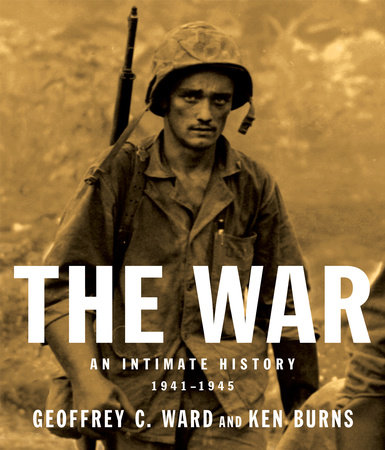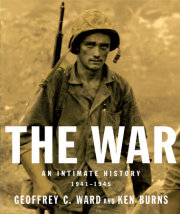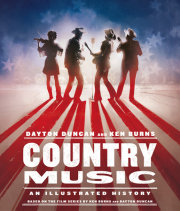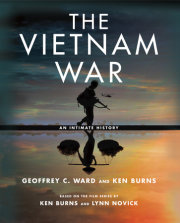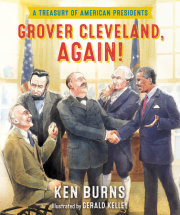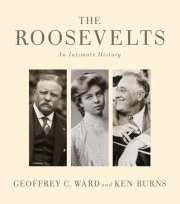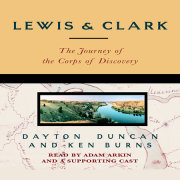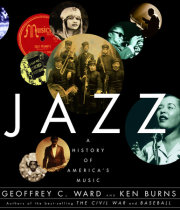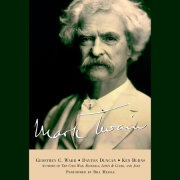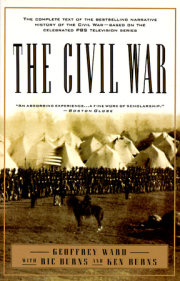Chapter One December 1941-December 1942 A Necessary War
I don't think there is such a thing as a good war. There are sometimes necessary wars. And I think one might say, "just" wars. I never questioned the necessity of that war. And I still do not question it. It was something that had to be done. —Samuel Hynes Sunday morning, December 7, 1941, began as most days do in Honolulu: warm and sunny with blue skies punctuated here and there by high wisps of cloud. At a few minutes after eight o'clock, the Hyotara Inouye family was at home on Coyne Street, getting ready for church. The sugary whine of Hawaiian music drifted through the house. The oldest of the four Inouye children, seventeen-year-old Daniel, a senior at William McKinley High and a Red Cross volunteer, was listening to station KGMB as he dressed. There were other sounds, too, muffled far-off sounds to which no one paid much attention at first because they had grown so familiar over the past few months. The drone of airplanes and the rumble of distant explosions had been commonplace since spring of the previous year, when the U.S. Pacific Fleet had shifted from the California coast to Pearl Harbor, some seven miles northwest of the Inouye home. Air-raid drills were frequent occurrences; so was practice firing of the big coastal defense batteries near Waikiki Beach.
But this was different. Daniel was just buttoning his shirt, he remembered, when the voice of disk jockey Webley Edwards broke into the music. "All army, navy, and marine personnel to report to duty," it said. At almost the same moment, Daniel's father shouted for him to come outside. Something strange was going on. Daniel hurried out into the sunshine and stood with his father by the side of the house, peering toward Pearl Harbor. They were too far away to see the fleet itself, and hills further obscured their view, but the sky above the harbor was filled with puffs of smoke. During drills the blank antiaircraft bursts had always been white. These were jet-black. Then, as the Inouyes watched in disbelief, the crrrump of distant explosions grew louder and more frequent and so much oily black smoke began billowing up into the sky that the mountains all but vanished and the horizon itself seemed about to disappear.
At that point, Daniel remembered, "all of a sudden, three aircraft flew right overhead. They were pearl gray with red dots on the wing—Japanese. I knew what was happening. And I thought my world had just come to an end."
He had no time for further reflection. The telephone rang. He was needed at the nearest aid station right away. A stray American antiaircraft shell had fallen into a crowded neighborhood. There were civilian casualties. "One haunts me every so often," Inouye remembered many years later. "It was a woman clutching a child. Her head was severed, but here she was with her arms around her baby. And so this is what I had to pick up. At seventeen."
Young Daniel Inouye's first experience of the war was like that of most Americans who lived through it. They would retain vivid memories of the things they actually saw. But each would also be affected by events they could not see, happening just over the horizon or thousands of miles away. The statesmen and strategists who moved so many of them from one place, one peril, to the next, were largely invisible, too. And most people were too busy trying simply to survive to be able to understand the parts that the battles they waged or watched or worried about were playing in the greater struggle. This is their story of the war, as some of them remember it.
Nothing like the attack on Pearl Harbor had ever happened to Americans before. In less than two hours, Japanese warplanes launched from carriers far out at sea had taken so terrible a toll on the Pacific Fleet that the War Department would keep the exact details to itself for years. Eight of the nine American battleships in the Pacific, including the USS Arizona, were sunk or severely damaged. So were three light cruisers, three destroyers, and four other naval vessels.
(All three American carriers happened to be away at the time of the attack, or they, too, might have been lost.) One hundred and sixty-four American aircraft-three quarters of those based around Pearl Harbor-were also destroyed, all but a few without ever having gotten off the ground. Two thousand four hundred and three Americans, servicemen and civilians, lost their lives. Some eleven hundred more were wounded.
It was around two-thirty in the afternoon when the first news of it reached ordinary citizens in the eastern United States. Katharine Phillips of Mobile, Alabama, was then a sophomore at Auburn University, in the east-central part of the state. She had just returned to her dormitory from church when she heard a scream from down the hall, then the sounds of weeping. "What's the matter?" she asked. "What's wrong?" Her housemates told her what they'd heard. Tears filled her eyes, too, she remembered, "but we comforted each other. The girls all cried and wept because they had boyfriends or relatives who were already in the armed forces. And we realized immediately that this would be war."
At about that same time back home in Mobile, Katharine's seventeen-year-old brother, Sidney Phillips, Jr., was perched on a soda fountain stool at Albright and Woods drugstore at the corner of Dauphin and Anne streets, drinking a nickel vanilla milkshake. It had an extra scoop of ice cream in it, courtesy of the soda jerk, Phillips's friend and former classmate William O. Brown. He and Brown-whom everybody called W.O.-had graduated from Murphy High School that June.
Suddenly, a distraught woman flew through the door. "Turn on the radio!" she shouted. Someone did. "It kept giving the same information again and again," Phillips remembered, "and we just all sat there quietly, listening." As the news crackled in, Brown kept wiping the same section of the marble countertop over and over again. Phillips just stared at the tiled floor; more than half a century later he could remember its distinctive black-and-white checkerboard pattern. "Everyone was very startled," he recalled, "excited, frightened, very serious. We knew this meant we were in the war. Some ladies started crying." After a time the radio announcer began repeating himself and the stunned customers at last began to talk among themselves. Phillips was the only one in the drugstore who had any idea where Pearl Harbor was; his uncle was a navy pilot and had once been stationed there.
W. O. Brown stopped wiping the counter and said, "Sid, let's go join the navy in the morning."
Phillips said, "Fine." He climbed onto his bike and pedaled home to tell his parents of his new plans. His mother was horrified: Sidney was too young for the draft, plus two of her brothers were already in the navy-that should be enough sacrifice for any family. His father, a schoolteacher, felt differently. He had been wounded on the western front during the Great War and had seen how poorly replacements had been prepared for combat during the war's last weeks. Since his son was sure to be drafted anyway, it was best for the boy to go in early: he stood a better chance of surviving if he was well trained. Both his parents finally gave their permission for him to go, though his mother never really reconciled herself. "The story in the family," Sid's sister, Katharine, recalled, "is that the recruiting officer crossed the street any time in the next year that he encountered my mother, because she would give him a piece of her mind for taking her little boy."
When Sid and W.O. met outside the federal building in Bienville Square at eight o'clock the next morning, the line of volunteers in front of the navy recruiting office already stretched almost a block. The two boys sidled up to the head of the line to see how long the wait might be. A sergeant from the marine recruiting office next door took them aside.
"Do you want to kill Japs?" he asked.
They did. That's why they'd come down to join the navy.
Forget about the navy, the sergeant said. All sailors do is swab decks. Marines were guaranteed to meet the enemy "eyeball to eyeball." Besides, he said, "you can't get into the navy-your parents are married."
Sid Phillips and W. O. Brown laughed and signed on with the United States Marines. By then, the radio was reporting still more terrible news. On the same day that the Japanese had attacked Pearl Harbor—December 8 west of the international date line—they had mounted simultaneous assaults on a host of other American and British targets in the Pacific region. Japanese troops had gone ashore in British Malaya. Japanese bombs fell on British strongholds in Hong Kong and Singapore, as well as on two U.S. outposts in the Pacific most Americans had never heard of before: Guam and Wake Island.
The Philippines were under attack, too. The United States had never acknowledged possessing a Pacific empire, at least not formally, as the British and European powers did. And plans were already under way to grant the people of the Commonwealth of the Philippines their independence in four years. But the life many American civilians led in the islands the United States had occupied since helping to overthrow its Spanish rulers in 1898 mirrored the ease, comfort, and unexamined racial assumptions of colonial rule elsewhere in Asia.
Eight-year-old Sascha Weinzheimer lived with her family on the vast Calamba Sugar Estate, a little over an hour's drive south of Manila on the island of Luzon. The estate was owned by her grandfather, Ludwig Weinzheimer, a German American planter who now lived on a vast farm in the Sacramento Valley and left the management of his Philippine holdings to her father, Walter, and his brother, Conrad. She and her siblings—Doris, three, and Conrad, Jr., called Buddy, just six weeks old—along with two small cousins were the only American children on the estate. But it was in every other way "the most wonderful home a girl could have," Sascha noted in a journal she began keeping about that time-a handsome bungalow surrounded by gardens filled with hibiscus and jasmine and ginger flowers. A Filipina
amah named Esperanza kept her company. Jesus, the family cook, prepared the dishes she liked best. In the mornings, her mother taught her her lessons. In the afternoons, she galloped through the cane fields alongside the champion polo player who had taught her how to ride. At sundown, she was sometimes allowed to join her parents and their grown-up friends poolside at the Canlubang Golf and Recreation Club. Its membership was limited to American managers and their guests, whose glasses were kept topped up with beer or whiskey and soda by a phalanx of white-clad Filipino "boys."
The only intrusion on this idyll so far had been polio, which had affected Sascha's legs in infancy and required her to visit a physical therapist in Manila three times a week. There had been rumors of growing trouble with Japan for months now. Sascha's father had even written Ludwig to ask whether the family shouldn't come home to Sacramento but had been told to stay where he was; there would be no war.
Sascha's mother had learned of the attack on Pearl Harbor by breakfast time on December 8, but the physical therapy sessions seemed so important that she decided to send her daughter into town for her noon appointment anyway. That is where Sascha was at around half past twelve-lying on the therapist's table and undergoing the painful stretching of her leg muscles that was meant to help restore their strength-when the telephone rang. The therapist, a Jewish refugee from Nazi Germany, picked it up and paled: Japanese planes had hit Clark and Iba airfields and were bombing outlying neighborhoods of Manila as well. She said that Sascha must start for home right away; there was no time even to put her shoes back on. "There were many people on the streets walking, carrying bags and bundles," Sascha wrote. "All the people seemed so scared. They were trying hard to get to the provinces, where they would be safer."
As Benjamin, the family chauffeur, nosed the car through the frightened civilians who filled the road, he and Sascha's amah talked furiously in Tagalog. Sascha only dimly understood what they were saying, but when they finally reached home, she wrote, "Mummy was waiting in the driveway. She grabbed me, hugged me tight and said they were fools to have let me go to Manila that day." Sascha still didn't really comprehend what was happening; she was just glad to get home early, she remembered, "because that meant I could beg an extra swim before lunch."
That same morning, at about the time the automobile carrying Sascha Weinzheimer pulled up in front of her family's bungalow, Corporal Glenn Dowling Frazier of the 75th Ordnance and Supply Company was some forty miles away, standing on a forested hillside in Little Baguio, across Manila Bay on the Bataan peninsula, watching Japanese warplanes wheel and dive above Luzon and cursing his bad luck. After all, he had chosen to come to the Philippines precisely because he had thought war would never follow him there.
One evening earlier that year, back home in the little farming town of Fort Deposit, Alabama, he found out that a girl he had known since the first grade and thought he loved was being courted by somebody else. The following day Frazier was still so angry and upset that when the owner of a juke joint in nearby Montgomery refused him service, he stalked outside, climbed onto his motorcycle, and roared back through the door, shattering bottles, smashing furniture, and leaving black skid marks on the dance floor. As Frazier raced away the bar owner chased him with a shotgun. The next morning, humiliated, scared, and unable to face his parents, he hurried to the nearest recruiting office. He was only seventeen, so he lied about his age, joined the peacetime army, and volunteered to serve in the Philippines. "I had no idea that we would actually be in a war," he remembered. But if there was to be one, "Germany was the most likely place," he'd thought then. "So, in my mind, I thought it'd be safe over there. I never thought Japan would be attacking us."
At first, he liked the choice he'd made. He was stationed in Manila, then known as the Pearl of the Orient for the beauty of its old buildings, parks, and broad avenues-and for the fleshly entertainment it offered to male visitors from everywhere. The city was a revelation to a country boy like Frazier. His unit was quartered at Fort Santiago, inside the thick-walled sixteenth-century Intramuros district. "It was like a luxury hotel," he remembered.
Copyright © 2007 by Geoffrey C. Ward. All rights reserved. No part of this excerpt may be reproduced or reprinted without permission in writing from the publisher.

